Sneak Peek: Backscatter Wide-Angle Photography Boot Camp

Mary Frances EmmonsDive Site: Little Cayman Beach Resort pool
Wide-angle photography is often regarded as one of the hardest kinds of underwater photography to master. So Scuba Diving magazine sent me to learn from the pros at a Backscatter Wide-Angle Boot Camp at Little Cayman Beach Resort, taught by Backscatter CEO Jim Decker and Lightroom wizard Erin Quigley of Go Ask Erin, who is also Scuba Diving's monthly imaging columnist. Here's a sneak peek at some images and experiences from the week — which started out in the resort's ocean-front swimming pool. "If you can touch it, you can light it," Decker and Quigley intoned over and over, urging students to get closer to their subjects, even plastic pool sharks, weighted and tethered for practice.

Mary Frances EmmonsDive Site: Mixing Bowl
Cool sponge, not a great shot, right? Sponges would prove very friendly subjects; I began to see them in a whole new light — literally — as the week went on. But for day one, my challenge was to get used to my unfamiliar equipment — a Canon 7D Mark II camera system in a Nauticam housing, two Sea & Sea YS-D1 strobes with Ultralight arms, and a Tokina AT-X107 DX Fisheye 10-17 MM F3.5-4.5 lens — not so easy for a lazy GoPro shooter who had almost never handled a DSLR underwater. Starting from zero, how much can you learn in just a week, you wonder? Plenty, as these images — arranged more or less from bad to better — will show. My rig was on loan from Backscatter Underwater Photo & Video; they sell all of these components and will help you put together a rig that works for you — that kind of assistance, combined with a Boot Camp experience, can have you seeing more progress in a week than you might make on your own in years, Decker says — and we would tend to agree after a week in the trenches. Definitely worth the effort. Settings: 1/160 sec at f/8.0, ISO 200
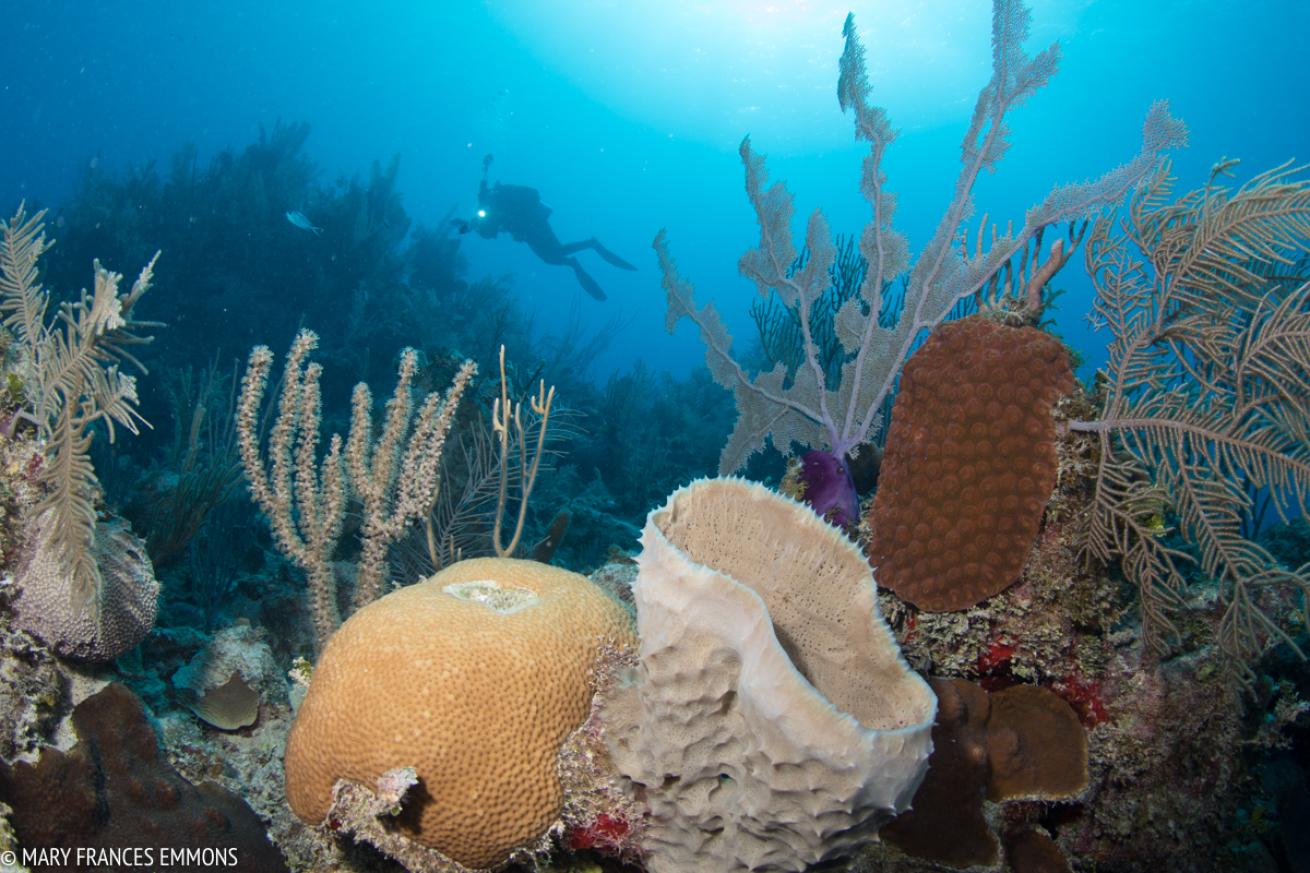
Mary Frances EmmonsDive Site: Uncle Lucky's Reef
"Reef barf," Decker proclaimed, not for the last time, and we all knew what he meant: a scene that lacks a real focal point or is just kind of a hot mess. I felt a little better when many of my fellow students came up with similarly tattered scenes at this dive site; my dive buddy and fellow student Lin, in the background, was a very patient subject. Settings: 1/125 sec at f/8.0, ISO 200

Mary Frances EmmonsDive Site: Jackson's Reef
I liked the composition here well enough (cropping would improve), and the fish were amazingly cooperative, but I couldn't get the colors and warmth I wanted no matter what I tried, in camera or in Lightroom. All was revealed when Quigley and Decker said in the nightly critique — a friendly, laugh-filled-but-honest event (with cocktails!) where everybody has a great time picking up tips and tricks — that this isn't a scene appropriate for the lens I was using. Close-focus wide-angle was the name of the game this week, and Decker hammered home that the way to learn this is to stay with this technique until we get it. Aye aye, captain! Settings: 1/160 sec at f/8.0, ISO 200

Mary Frances EmmonsDive Site: Randy's Gazebo
My dive buddy captured as she comes through the famous arch at Randy's Gazebo, a well-loved site on Little Cayman's famous Bloody Bay wall. Feeling much more comfortable with the camera I was tackling less static stubjects; Lightroom allowed me to correct skin tones and open up the blue in the arch behind her. Settings: 1/200 sec at f/8.0, ISO 200
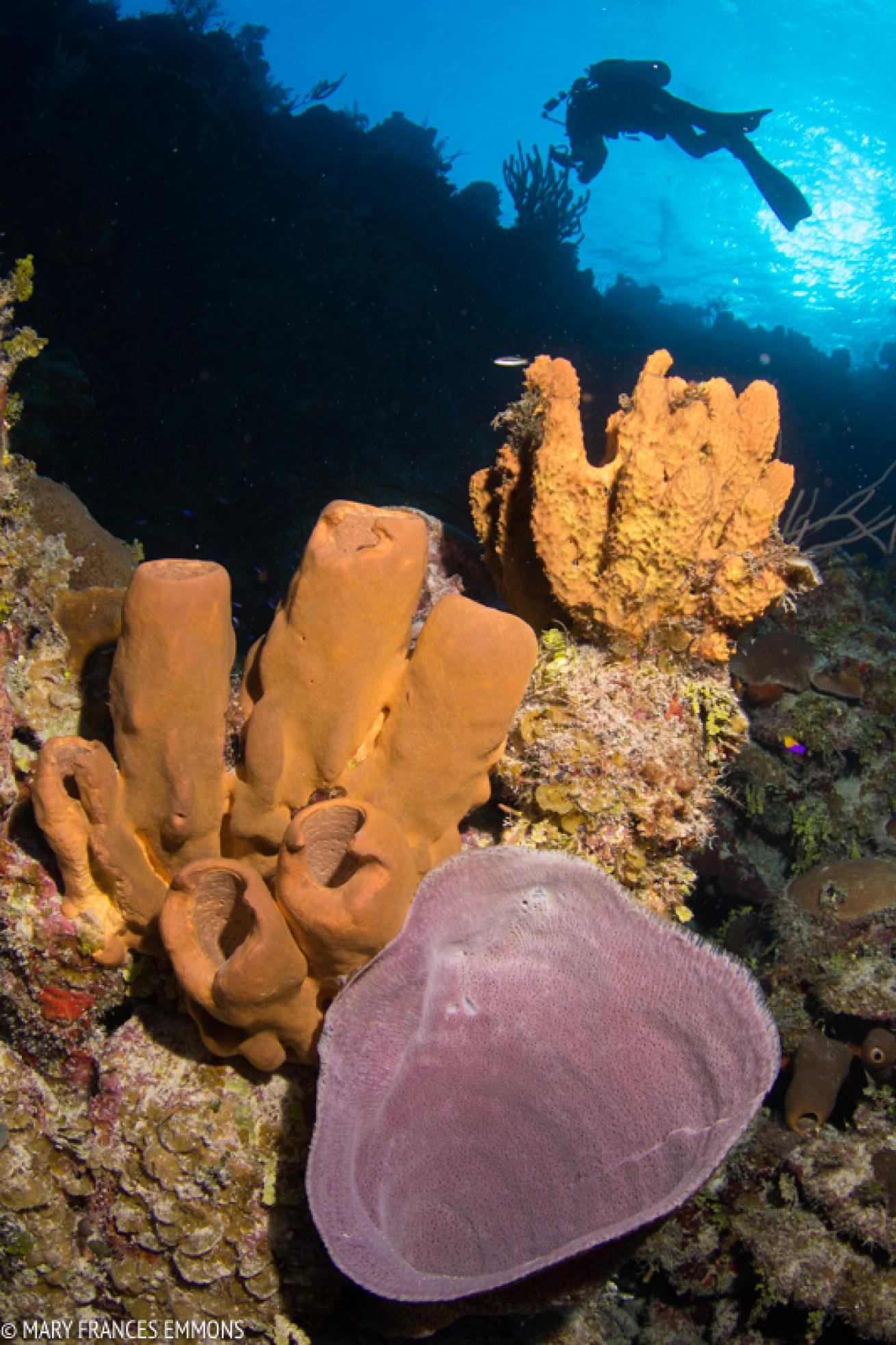
Mary Frances EmmonsDive Site: Mike's Mount
A shot from midweek — sponges! — where I'm starting to be able to put more elements together: sponge grouping, diver and sunball. Lightroom's brushes and radial filter allowed me to bring up the exposure on the sponges, and dehaze the sunball. Settings: 1/160 sec at f/8.0, ISO 200

Mary Frances EmmonsDive Site: The Meadows
A shot in very shallow water with a lot of natural light at one of Little Cayman's most beautiful sites, a group favorite. Lightroom allowed me to make the tentacles much sharper and to play with colors — perhaps a bit too much, but beauty is in the eye of the beholder, even in post. Settings: 1/80 sec at f/8.0, ISO 100

Mary Frances EmmonsDive Site: Lea Leas Lookout
A favorite shot of the week, and one captured by many students: the cooperative groupers of Bloody Bay Wall. Lightroom brushes allowed me to bring up the light on the grouper, while gradient filers brought down the light on the left of frame. Another brush lightened the water in background and made the diver easier to see. Settings: 1/125 sec at f/8.0, ISO 200
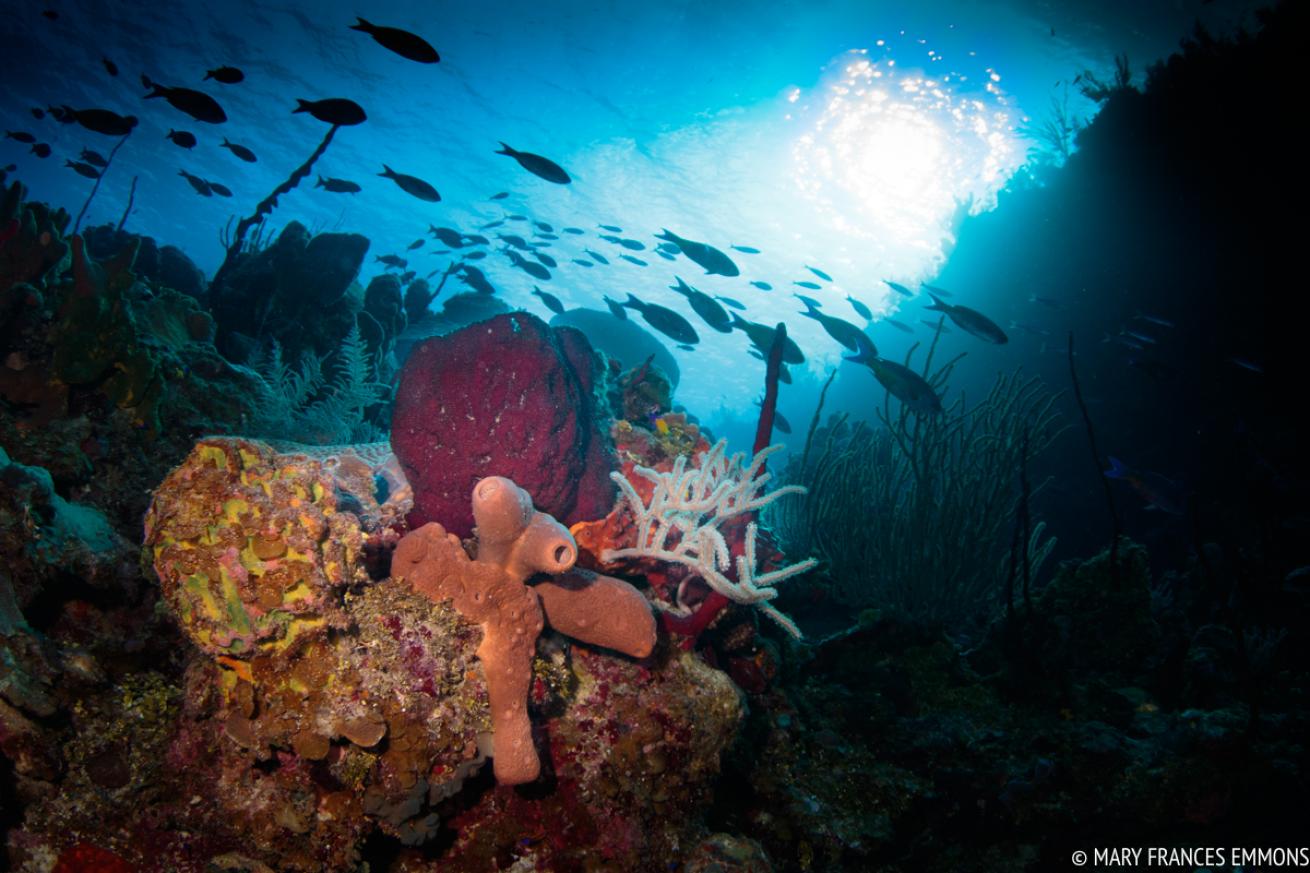
Mary Frances EmmonsDive Site: Randy's Gazebo
Coming around the arch at Randy's Gazebo I saw this school crossing over the sponges with sunball on right and snapped a very underexposed shot. Lightroom allowed me bring out the sponges, but the super-white-hot sunball is something that can't be corrected, even in Lightroom. Hottest object in our solar system, Decker kept reminding us. Truthfully this image is overprocessed, bit of a literal hot mess, but I still love it. Something to aspire to! Settings: 1/200 sec at f/7/1, ISO 200
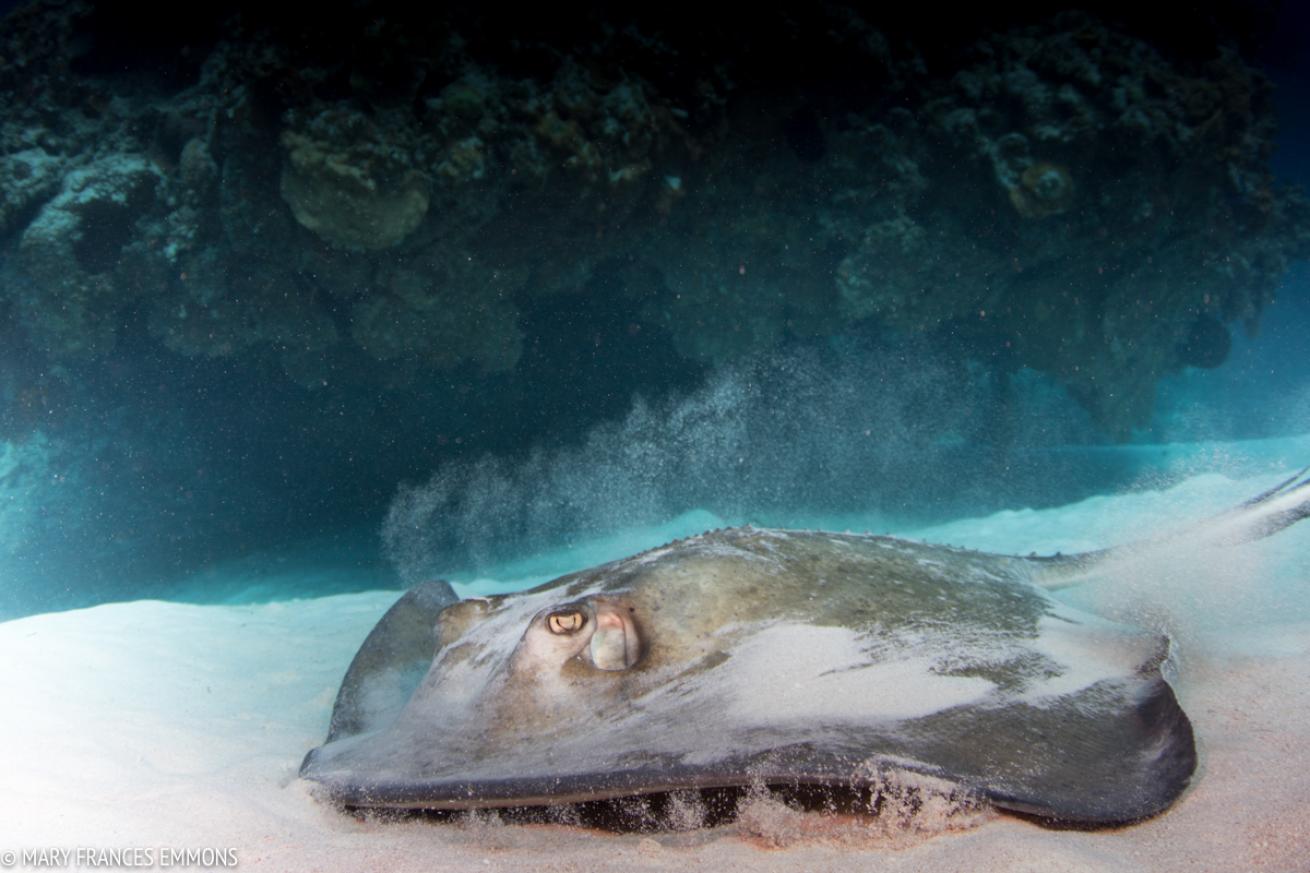
Mary Frances EmmonsDive Site: Jackson's Reef
Words to remember: "Strobes?" Decker would call out. "UP!" we hollered back. "Strobes?" "UP!" "Strobes? UP!" It became our collective mantra. Getting strobes high and back helps with backscatter and avoids blowing out the sand; Lightroom allowed me to bring up the light on the stingray's eyes, sharpen the heck out of the sand below it, and darken the reef in the background. Settings: 1/160 sec at f/8.0, ISO 200
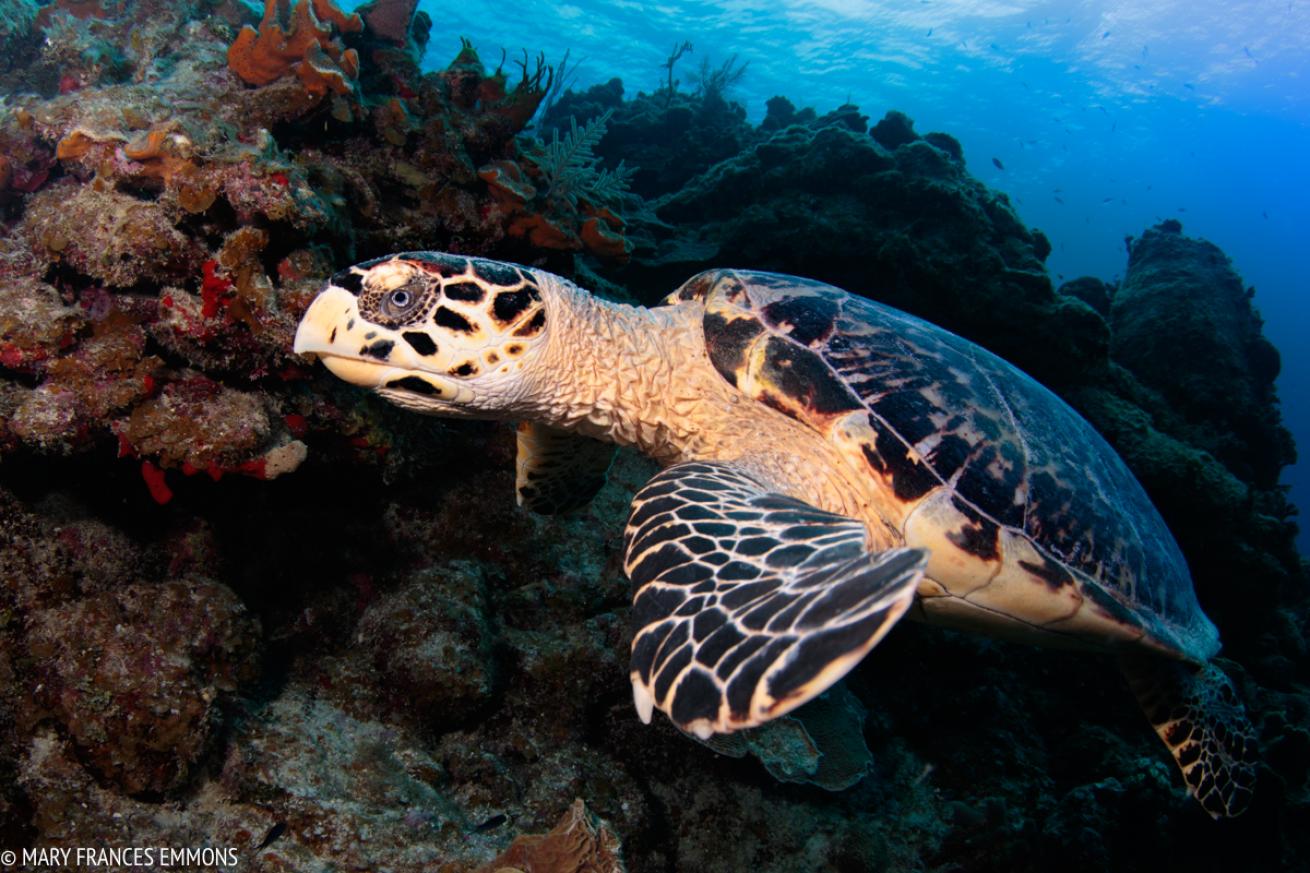
Mary Frances EmmonsDive Site: The Meadows
What do you do when an animal approaches in a shot you're not set up for? Mash your strobes together, drop the camera to the animal, and start shooting, Decker advised. This friendly turtle — another Little Cayman advantage: they're everywhere — is practically touching the lens here but was still under exposed; Lightroom allowed me to improve that, though I may have overdone, and to improve color over all, and sharpen around the eye. Settings: 1/200 sec at f/8.0, ISO 200
Check back for examples of student and pro "before and afters" using Lightroom for post-production, coming soon on scubadiving.com. We'll share the full story of a fun and rewarding week in Scuba Diving's special SeptOct Photo Issue.










